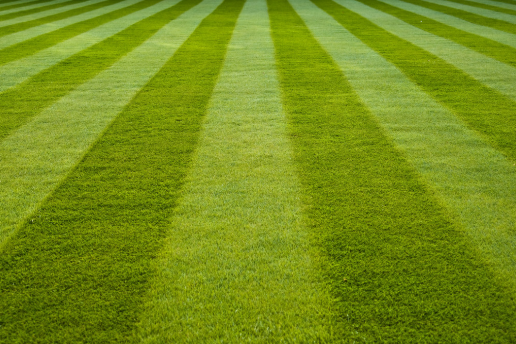Many people feel that an attractive and best lawn means just some weeds with a big lush carpet of uniform and beautiful green grass. In general, people spend more money for the lawn to kill already grown plants and then to plant the grass at the lawn. The other disadvantage related to landscaping is lawn equipment like weed whackers, mowers and few more emit so much waste into the air than vehicles. And also in a survey, it is reported that nearly 30% to 60% of residential water is spent on watering lawns. Obviously, with many areas suffering from droughts, this is a substantial water burden.

Because of all these reasons, Switching to natural lawn care could be one of the best, easiest and also the cheapest way you can prefer. Here are few tips to follow to create a natural lawn.
Improve The Soil:
Do you know lawns look more beautiful on the surface? When it comes to growing an anything including a beautiful lawn, it is best to start it from the bottom up. And for this, improving the soil is the first step you need to take care. For long-term growth, improving the soil will give your grass a perfect foundation, and this will also make your grass to be hardier. This process could even reduce the need for chemicals and watering. Testing of soil testing helps you to be aware of what is needed for your lawn. You can even get free soil testing in local garden shops and county extension offices. You can also prefer using the shovel to remove 6 inches deep section of grass and soil instead of using soil test. Health and good soil will be dark. It should crumble easily and the grass grown should have a strong root system. The good soil needed for grass will have a pH less than 7, and that is slightly acidic.
Steps Need To Be Followed For Better Lawn Soil:
The starting step is to aerate in the spring if you want to enhance the texture of the soil. Then, you have to fertilize it at least once or twice per year with compost. This process is called as a top dressing, and it is done by adding up to an inch of topsoil or compost and finally raking into the grass. You can also add pH adjusters to get the pH in optimal range.
Choose Good Grass:
By consulting a local lawn care expert, you can choose a good grass that is hardy, and that doesn’t need a lot of extra water.
Mow in the Right Way:
Never mow shorter than 3 inches or 4 inches. For this, it is required to mow more often as you should not cut more than one by a third of the leaf off at a time. You should not also mow when it is too dry or hot. Always maintain mower blade sharp. If your lawn is small, then use a reel mower.
Water carefully and consistently:
Lawn watering could waste your residential water and can cause scarcity in summer. By following above steps, you can reduce the amount of water that is needed for healthy and stronger lawn. Watering plants, early in the morning can prevent fungal disease, and it can also reduce evaporation loss, and Osborne advises.
